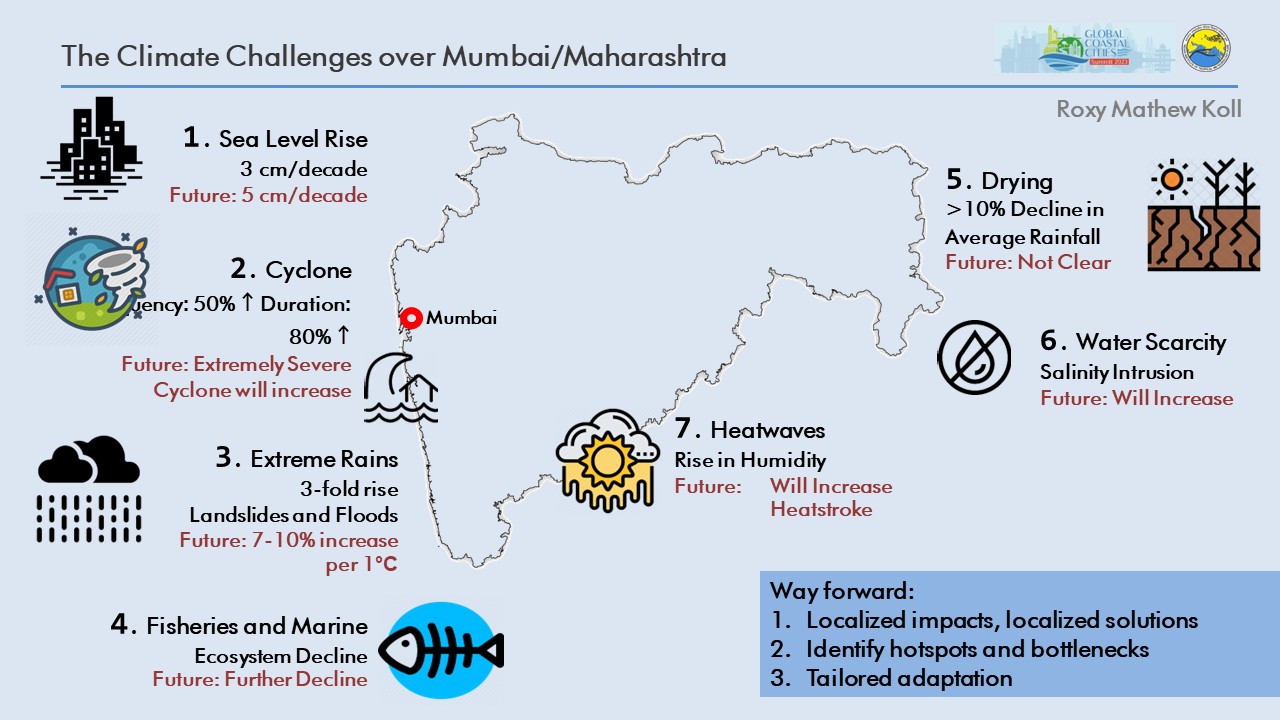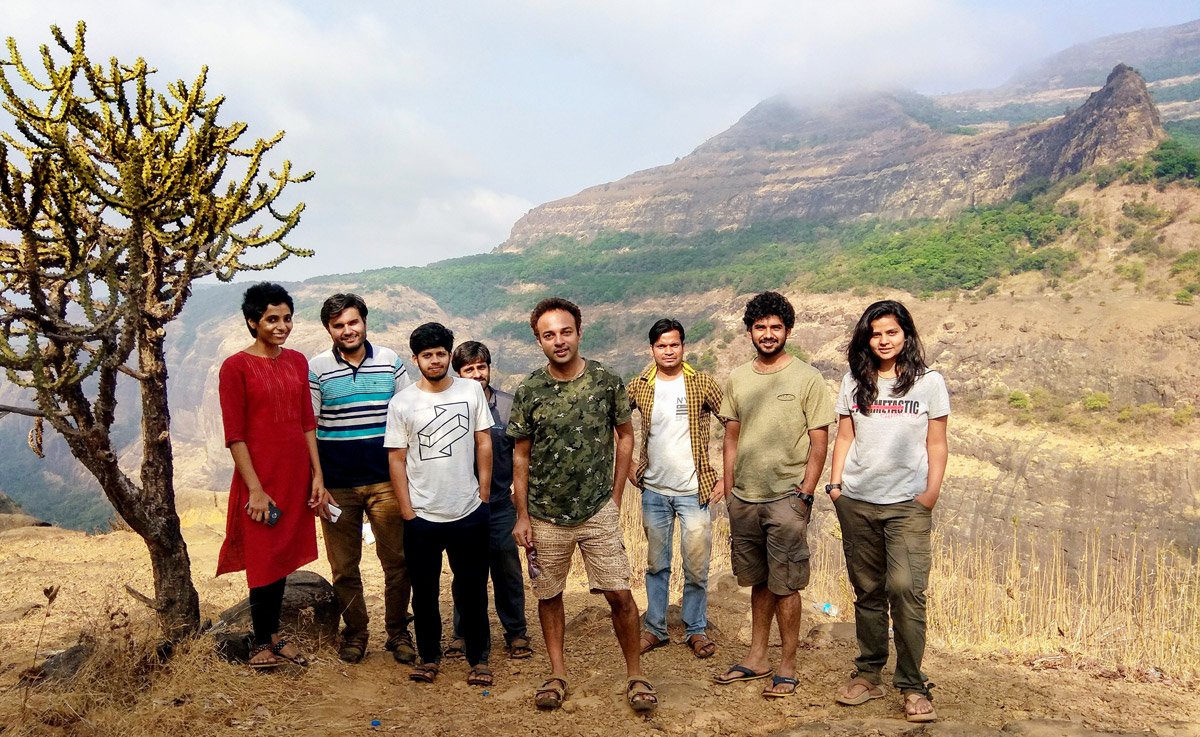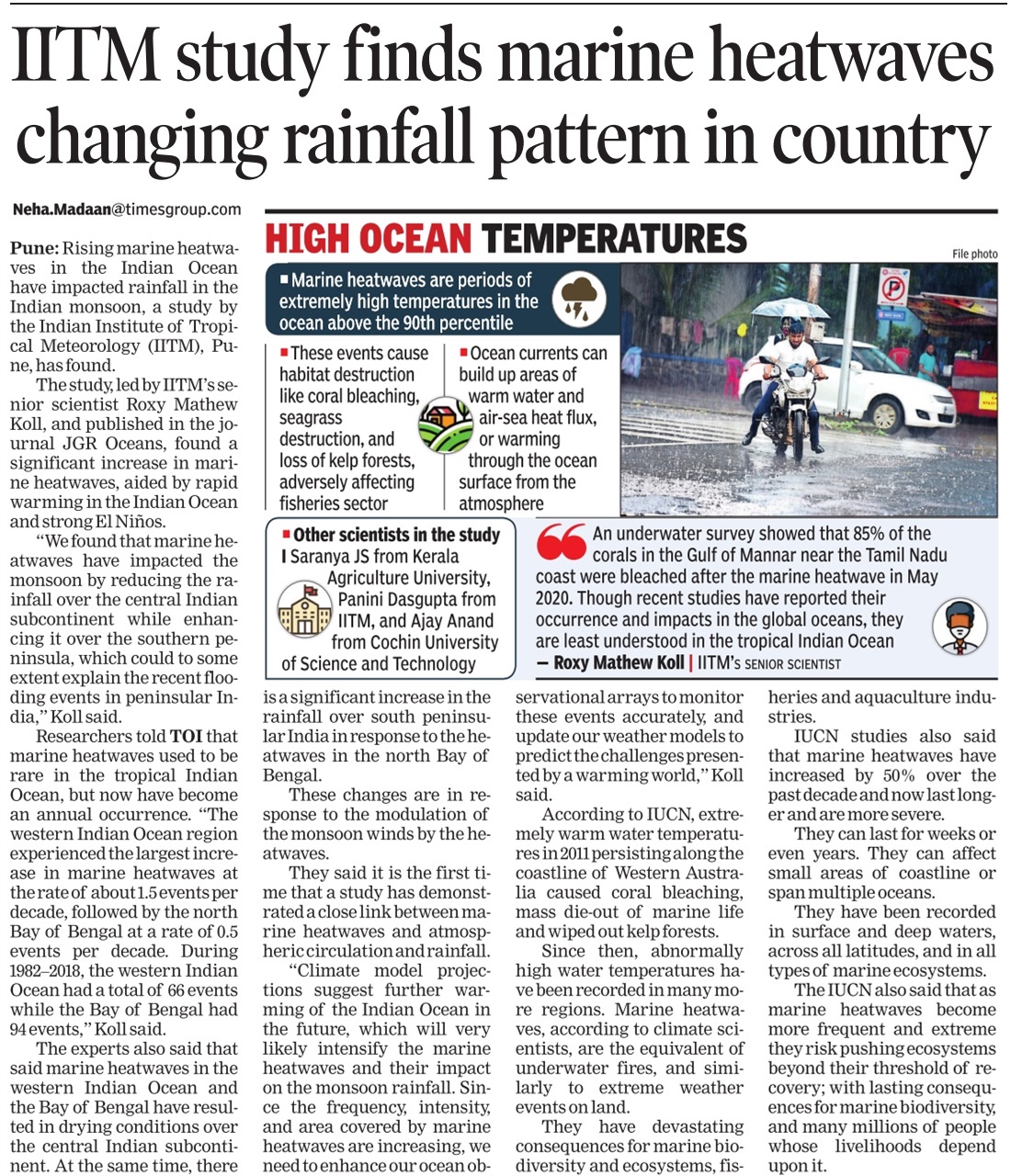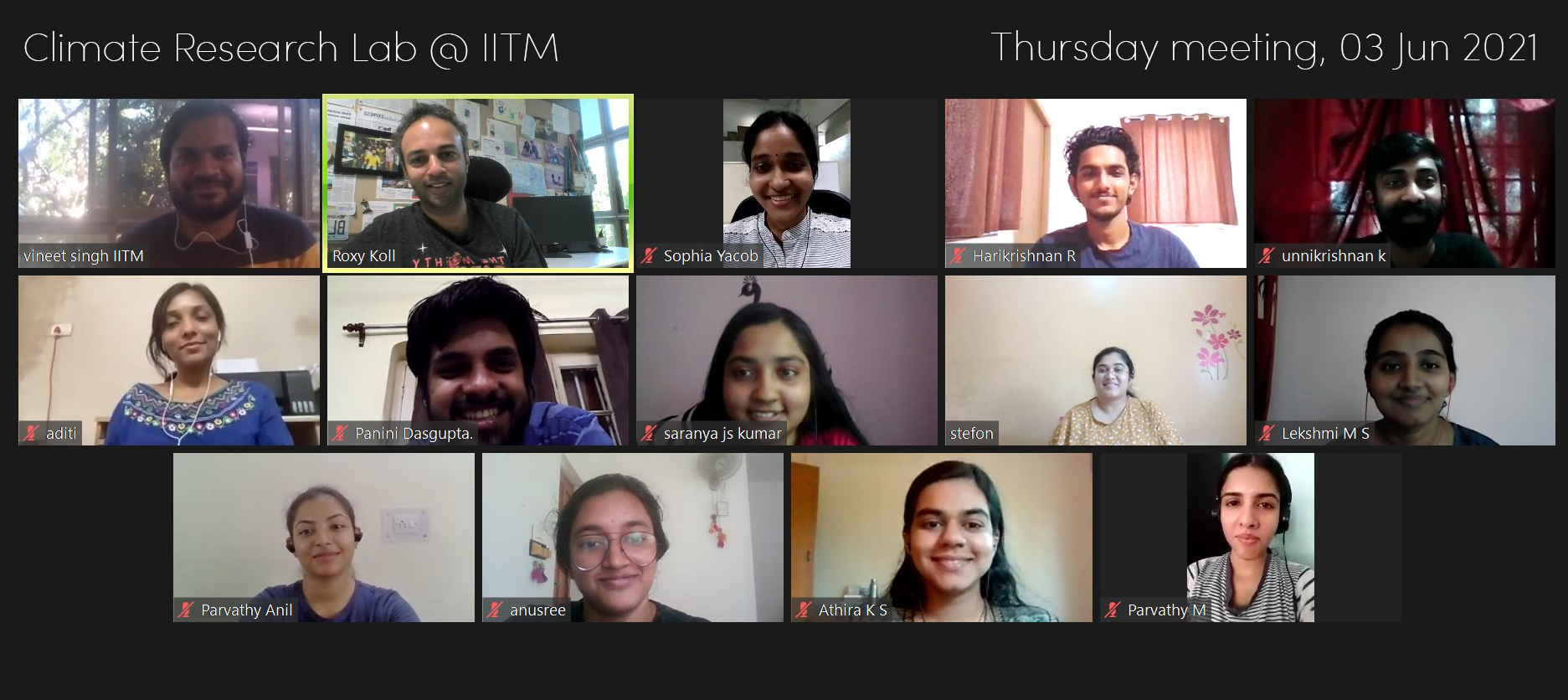Mumbai Should Rise Above the Rising Seas
Mumbai is growing at a fast rate. The population of Mumbai, including the city and the suburbs, crossed 20 million around the time when the global surface warming hit 1 degree Celsius. By 2050, the population is projected to double—reaching about 40 million. Guess where we will be in terms of global warming? Global mean surface temperatures will cross 2 degrees Celsius by then.

As Mumbai’s population skyrockets, so does the urgency to address the pressing challenges posed by climate change. Mumbai has always been vulnerable to flooding and extreme weather events. However, the effects of climate change are exacerbating these risks, necessitating immediate action to protect the city and its inhabitants.
India, particularly the west coast, is at high risk because we are in the tropical belt where the weather systems are relatively short and fast moving, and hence less predictable. The impacts of global warming are hence heightened in the tropics. India has become the poster child of climate change. The geographical location of India—surrounded by the tropical waters at one end and Himalayas at the other end—used to be the region’s forte, but not anymore. The tropical waters are warming at a fast rate, and the Himalayan glaciers are also melting rapidly. As a result, India is witnessing a clear trend in rising sea level, cyclones, floods, landslides, heatwaves, and droughts. This is affecting the food, water, and energy security of the region.

Sea level rise is one of the most significant consequences of climate change, and Mumbai finds itself on the front lines of this battle. Sea level rise in the Arabian Sea is not just due to melting ice—it is largely due to thermal expansion caused by warming of the ocean—since water expands as it warms.
With its expansive coastline and low-lying areas, the city is highly susceptible to inundation as the seas encroach further inland. The rate of sea level rise in the west coast is at 3 cm per decade. In centimeters this might appear like a small number. However, a 3 cm rise for a slope of 0.1° will take away 17 meters of land per decade. The rate of sea level rise will intensify into 5–7 cm per decade as global carbon emissions continues unabated.
Will Mumbai submerge by 2050? A recent study indicated that large parts of Mumbai could be under water by 2050. This is however based on satellite-based elevation data that is not calibrated over India using ground truth data at local levels. Generally, the uncertainty of the satellite-based data over India is above 1 meter, which is larger than the estimates of sea level rise. To be certain, India needs a better evaluation of the risks that sea level rise presents, in terms of better elevation data for its coastline, and also sea level data in the Indian seas.
Based on the current rates of sea level rise, Mumbai may not submerge by 2050. However, floods that are prolonged and cover a large area will happen. Mumbai is a city which was made out of water, and some parts of it have always been at or under sea level. The worst-case scenario might be when floods due to heavy rains and high tide come together in the future when the sea level is also high. Such “compound floods” have the potential to submerge large parts of Mumbai, at least for several days in the near future. Considering that Arabian Sea is becoming much more fertile in terms of cyclonic activities, we can expect frequent and intense storm surges (huge waves 5 m high and above) as an additional factor in these compound floods of the future.
Climate change is only one side of the story. Cities of India are vulnerable to flash floods as rapid development, concretization, and land use changes shrinks down the floodplains and congest the rivers. The Bandra Kurla Complex was built on mangrove land and the Mithi river was reduced to a nallah due to roads and encroachment. Our natural defenses against floods are degraded. Mumbai floods are more of a management problem due to unplanned development than a climate change problem.
We need to redesign our cities such that they are resilient to the intensifying floods. If Mumbai population is going to double by 2050, this will go hand-in-hand with a corresponding surge in urban development. Any development can be an opportunity to redesign the city considering “future” climate challenges. Flood maps should be prepared based on 2070–2100 climate change projections to safeguard the city from worst-case scenarios in the future.
The city must adopt a holistic approach that combines eco-system based sustainable development with innovative engineering solutions and thoughtful urban planning techniques to elevate itself above the rising seas and floods. In addition to the physical infrastructure, Mumbai must also focus on the preservation and restoration of its natural ecosystems. Mangroves and floodplains have traditionally acted as the lungs of the city, protecting it from flood water and strong winds. Protecting and expanding these coastal wetlands can significantly enhance Mumbai’s resilience to sea level rise while providing safe habitats for biodiversity and marine life.
Despite all efforts, compound floods can have devastating consequences, overwhelming existing infrastructure and emergency response systems. To confront these compound events, Mumbai needs to adopt a multi-faceted approach that integrates early warning systems, disaster risk reduction, and community engagement. Strengthening infrastructure, improving drainage systems, and implementing effective land-use planning can reduce the vulnerability of Mumbai’s neighborhoods to flooding and landslides. Simultaneously, educating and empowering communities to respond and recover from these events is crucial for resilience.
Adaptation and resilience strategies are crucial for Mumbai’s survival. However, Mumbai cannot fight this battle alone. Collaboration between different stakeholders—government bodies, urban planners, architects, scientists, engineers, and community organizations—is vital to developing comprehensive strategies. Public-private partnerships can provide the necessary funding and expertise to implement innovative solutions effectively.
Mumbai stands at a critical juncture in its history. The city’s future, prosperity, and even survival depend on its ability to adapt and rise above the rising seas.
Originally published in Mumbai First Newsletter [PDF], MoneyControl, and Mumbai Mirror [PDF]
Suggested Citation:
Roxy M. K., “City much vulnerable to climate change, we must learn to adapt”, Mumbai Mirror, 5 November 2023, p15.




